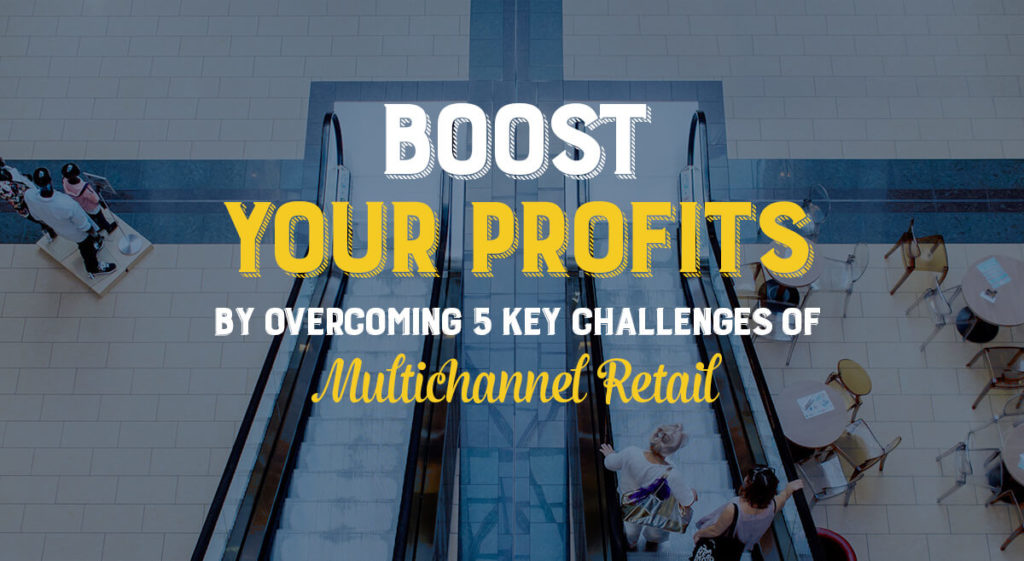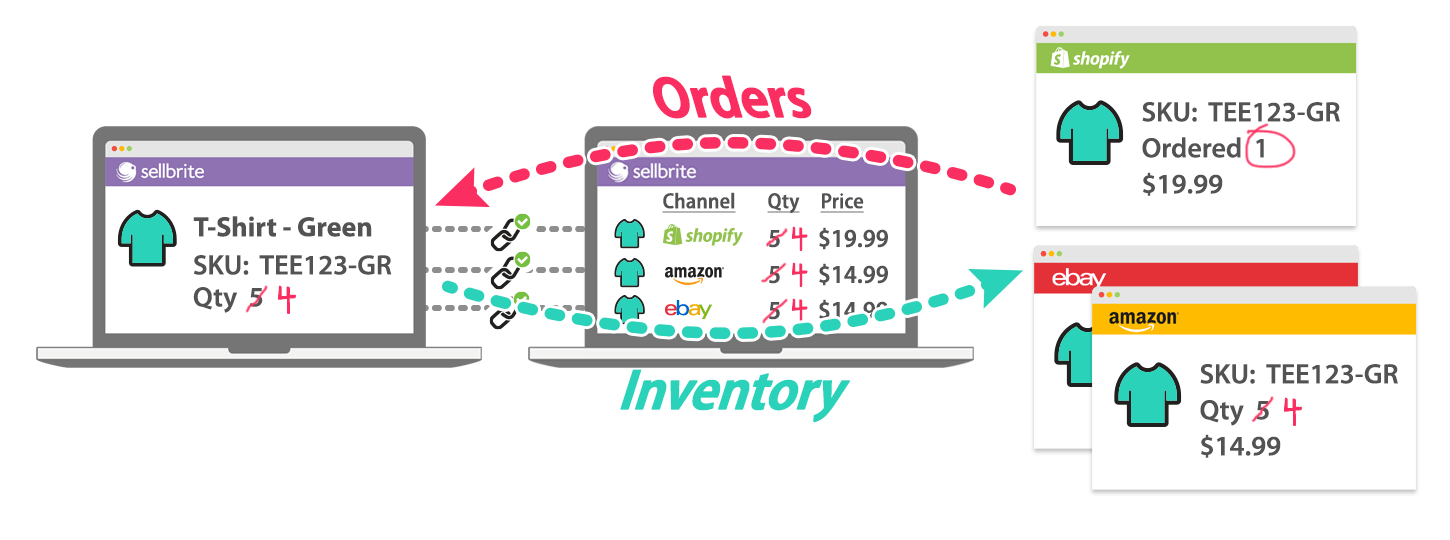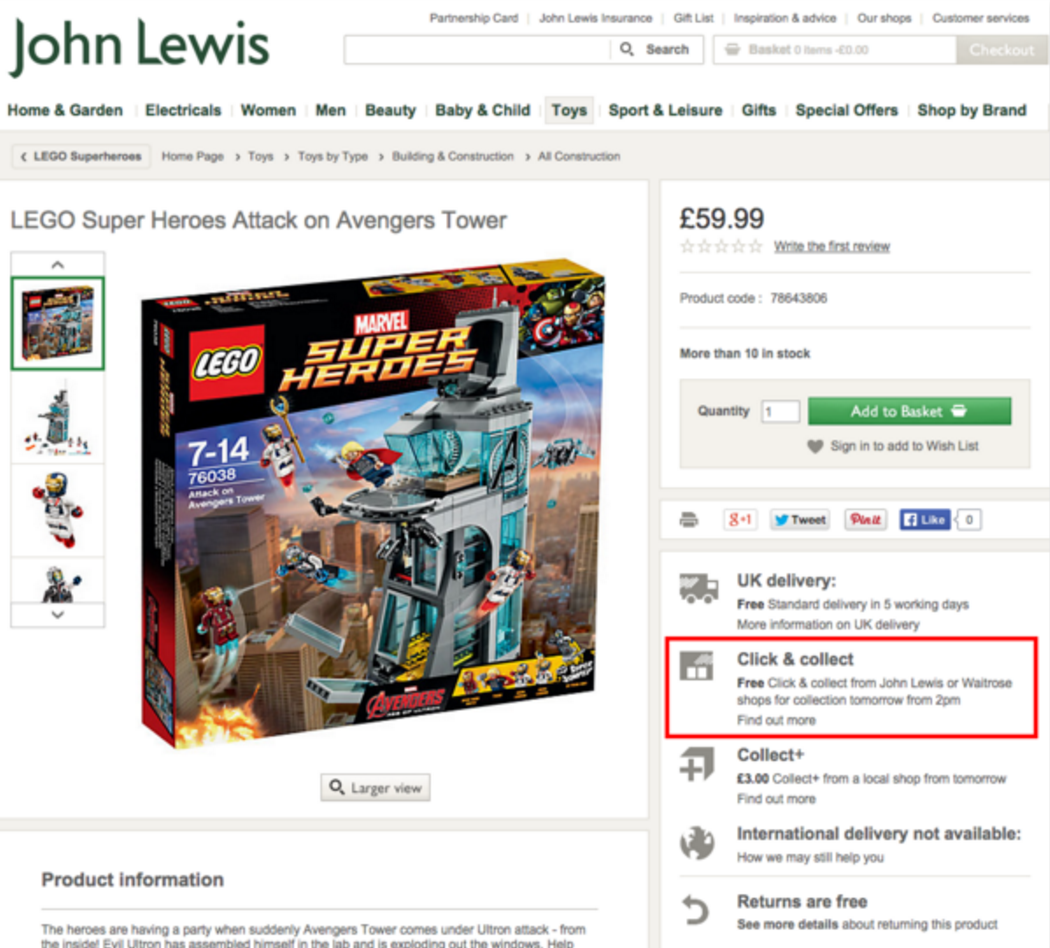Only 19% of top retailers say they know how to fulfill multichannel demand while still remaining profitable.
That’s the harsh reality facing most multichannel retailers today, with rapid technological advancements, higher customer expectations, and stiff competition cutting profit margins dramatically.
It’s important, then, to identify the challenges you need to address to adapt to customer expectations and also remain profitable across all your customer engagement channels. So let’s look at some key challenges you need to address to be futuristic, flexible, and profitable.
Challenge 1: Inventory Management and Transparency Across Multiple Channels
If your online store lists a product as out-of-stock when you have the same product in stock at a brick and mortar store, or vice versa, you’ll not only create a poor customer experience but also lose out on potential sales.
This points to the importance of managing inventory levels accurately, across all channels, in real-time. Blurring the lines between inventory levels across online and brick and mortar stores is the key to addressing this challenge.
Multichannel inventory management software, like Sellbrite, allows you to list and maintain inventory across multiple sales channels, fulfill orders, and tap into inventory reporting intelligence reports, giving you the power to make comprehensive inventory decisions. Sellbrite integrates with popular ecommerce, marketplace, and shipping platforms, allowing you to fulfill customer orders efficiently.
Giving consumers access to view your inventory levels is a great sales booster. This way, if a product is not available on your online store but is available at your warehouse or brick and mortar store, they know they can still buy what they need from you.
Continuous cloud-based inventory syncing allows you to be agile, too, by meeting varying customer demands and ensuring you have a uniform level of inventory across all your channels. You only need add new inventory to the platform once and inventory levels will automatically get adjusted across all channels as orders come through. That’s the simplicity of a centralized inventory management system!
Challenge 2: Marketing Effectiveness Across Multiple Channels
Your marketing strategy for customer acquisition and retention can vary across different channels. For instance, you might decide to put up banners and billboards to boost customer footfalls at your brick and mortar store and invest in Google AdWords for your eCommerce website. But this increases your marketing expenditure and squeezes out profit margins.
What you need to do is create personalized marketing experiences for customers across all channels and implement a strategy with the leverage to boost sales on all your sales channels through the right diversification of funds invested in marketing.
95% of users consider sites in search engine results as leaders in their market segment. Your site acts as a marketing asset for all your sales channels. Clearly, search engine optimization (SEO) is a strategy you need to adopt to build brand awareness and direct people to your website. The biggest benefit of this strategy is the long-term cost benefits. Other channels like paid advertising require continuous investment, increasing your costs. SEO, on the other hand, continues to yield marketing returns over the long term with no advertising investment required. All you need to do is consistently create great content.
Given that marketing costs can be up to 40% of the total costs in a retail business, it’s important to spend wisely. Email marketing continues to be the most cost-effective customer acquisition channel. By collecting your website visitors’ email addresses via content perks, you can nurture customer relationships and let them know about special promotions in store or online. Marketing automation tools like Marketo can help you control marketing expenses by reducing the man hours you spend on creating and delivering campaigns while still making sure you remain profitable and effective.
Oasis, a UK-based fashion retailer, is a great example of a company doing omnichannel marketing the right way. In store, all of their sales staff carry iPads, which help them not only talk to customers with all the information they need to explain product benefits but also update inventory levels in real time. Clearly a win-win for both the business and the customer. The icing on the cake is if something is out of stock in the brick and mortar store, the staff can immediately place an order through their iPads and have it delivered to your doorstep. Now that’s the way to ensure you never lose out on a sale!
Challenge 3: Shipping and Customer Returns Policy
When you’ve got an online store, brick and mortar stores, and a warehouse, shipping costs to customers or between your sales channels can really escalate. If you have a customer returns policy, your shipping costs can get completely blown out of proportion.
71% of retailers state that customer returns are the most costly aspect of their business. Obviously, this is not something to take lightly, so you need to put a process in place to balance good customer service and low shipping costs.
Some retailers keep customer returns costs in check by asking customers to come into the store or warehouse to return or exchange their purchased product. This reduces shipping costs to and from the customer and also allows retailers the benefit of eliminating any time lags between product replacements or returns, making an overall speedier customer experience.
Another solution for reducing customer returns is to make them dependent on a threshold purchase value. This way customers can only make returns if they buy products worth a certain amount, which is fair to both the business and the consumer.
To reduce shipping costs on customer purchases, it’s possible to have a “Click & Pick Up” policy. Basically, this means consumers buy the product online and pick it up in store. This is a great way to connect your online and physical sales channels and also reduce shipping costs, especially if the product you’re selling is heavy in weight, like furniture.
Challenge 4: Payment Solutions for Consumers to Transact Across Multiple Channels
With the rise of mobile-based payment solutions like Apple Pay and Google Wallet that make it easy for customers to transact with retailers as well as the rise of various online payment options, including Paypal, Bitcoin, and others, it’s easy for transaction costs to get out of hand as most providers take a cut of the amount of the sale.
To reduce processing costs, you need an optimal combination of payment service providers. Providing the convenience of mobile payment is a no-brainer with more than 50% of all eCommerce traffic coming from mobile devices. It’s also possible for retailers to build their own payment processing technology, rather than using an external vendor, to control costs. This way, retailers can keep 100% of the revenue from sales without spending a dime on payment processing fees.
Challenge 5: Adopting Technological Advancements into Omni Channel Retail
With a constant stream of new retail technological innovations, it’s important to know how the future of retail is changing. The simple act of being aware of and utilizing these new innovations to your advantage will yield high returns in the long run.
One example of such a technological innovation is Beacons. While a beacon is a pretty low-cost piece of hardware, it can take time and effort to plan how you’re going to utilize them to improve the overall customer experience and your profitability. Investing the time to integrate such hardware into your overall IT and marketing infrastructure can be costly, so take a lean approach to testing the benefits of such technology. You could start by implementing it at one store, evaluating the results, and then making the bigger decision to roll it out across all physical stores once you’ve gathered some data and ensured you’re getting the most out of them.
Another software application that reduces profit margins is a price comparison tool. Tools like Nextag and PriceGrabber allow consumers to make price comparisons across different brands and be smart about their shopping. This points to the importance of differentiation and branding as a multi channel retail business rather than competing solely on price.
Wrapping Up
Running a multi channel retail business is like running multiple businesses under one brand name. It’s clear you need to work hard at unifying your operations cohesively while also remaining customer-focussed to survive and overcome the challenges in your path to building a successful retail empire.




